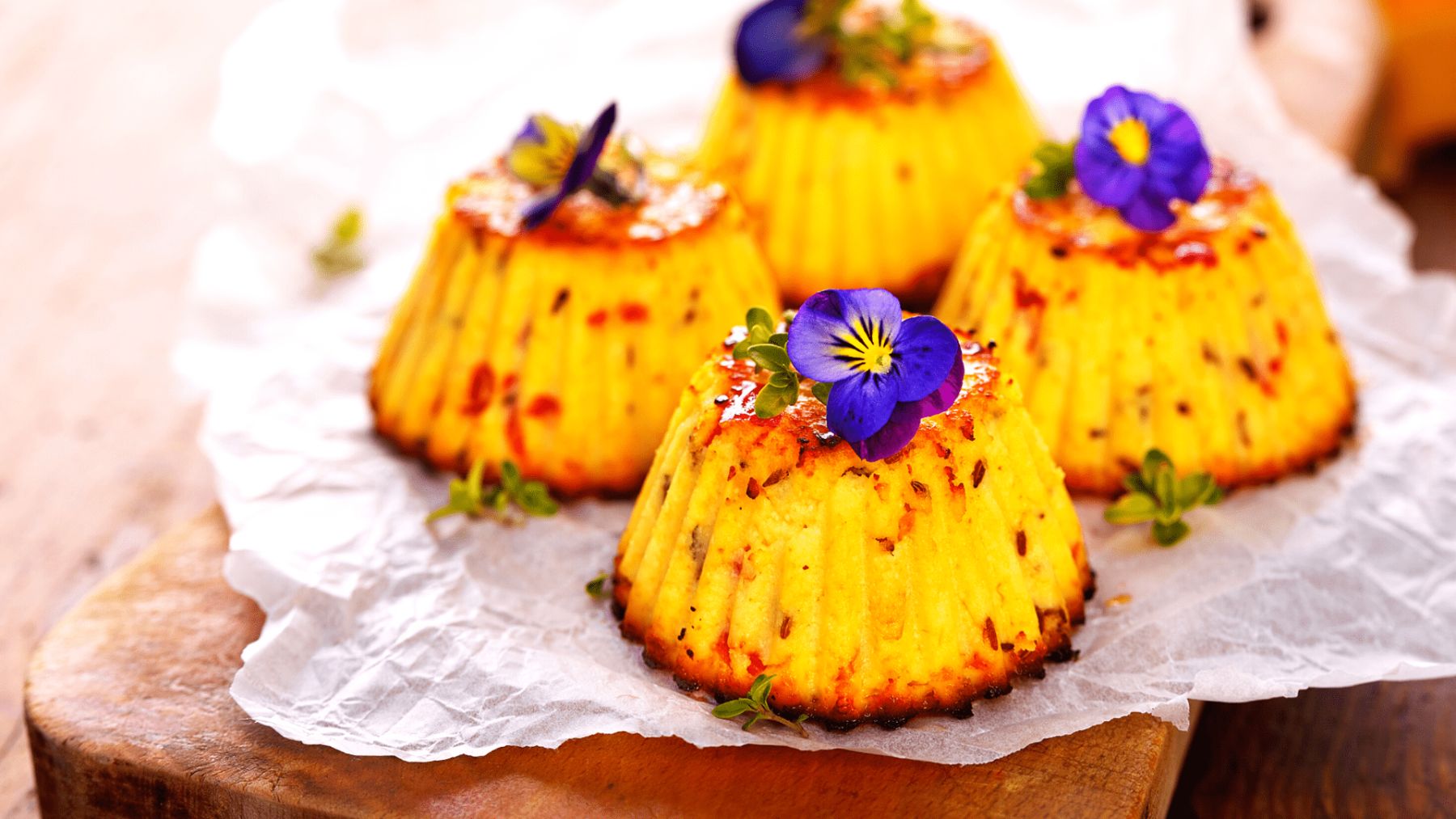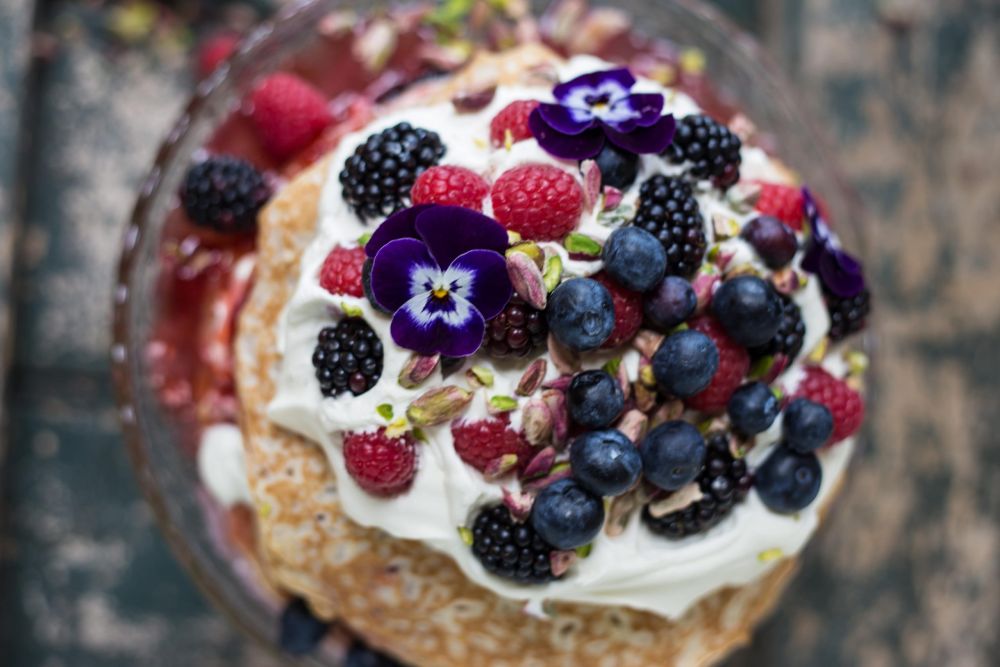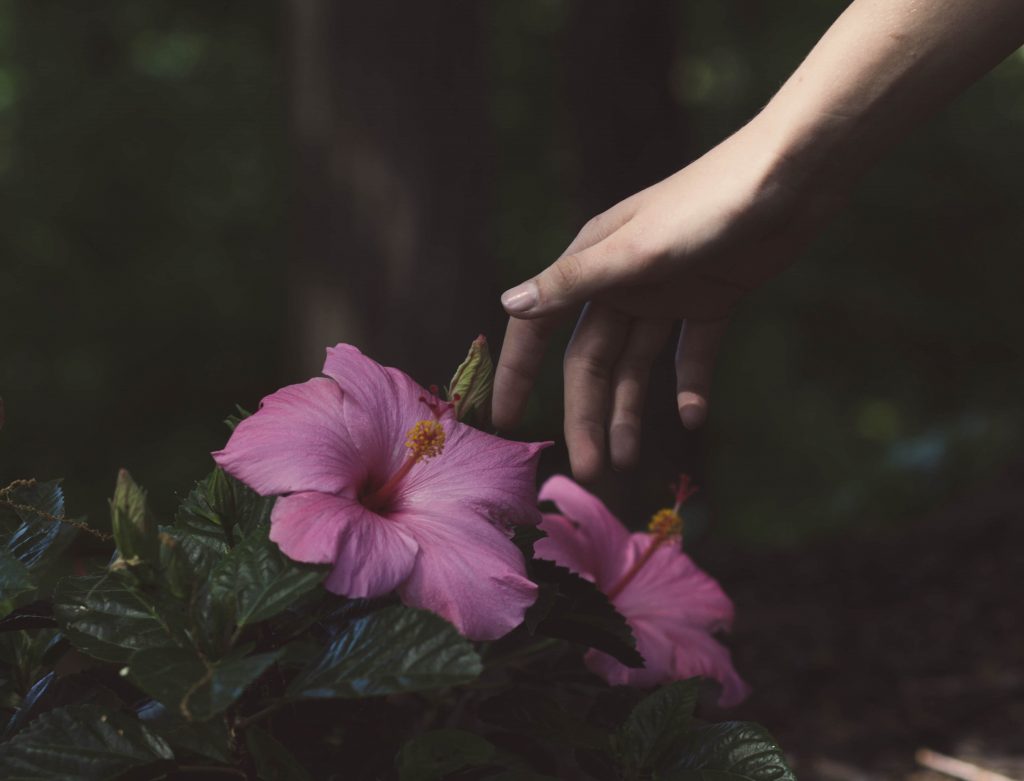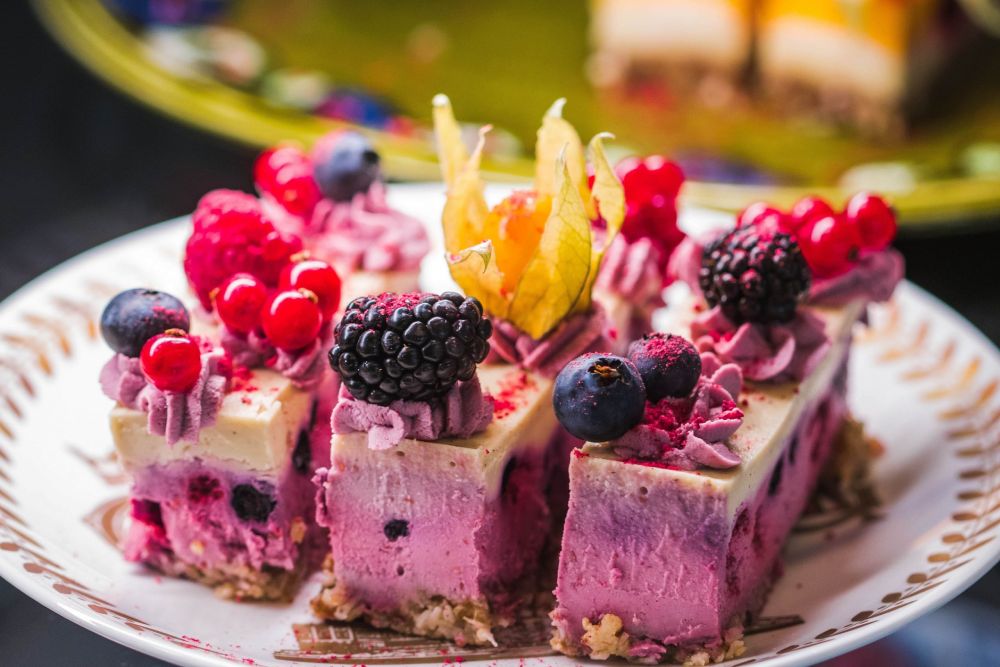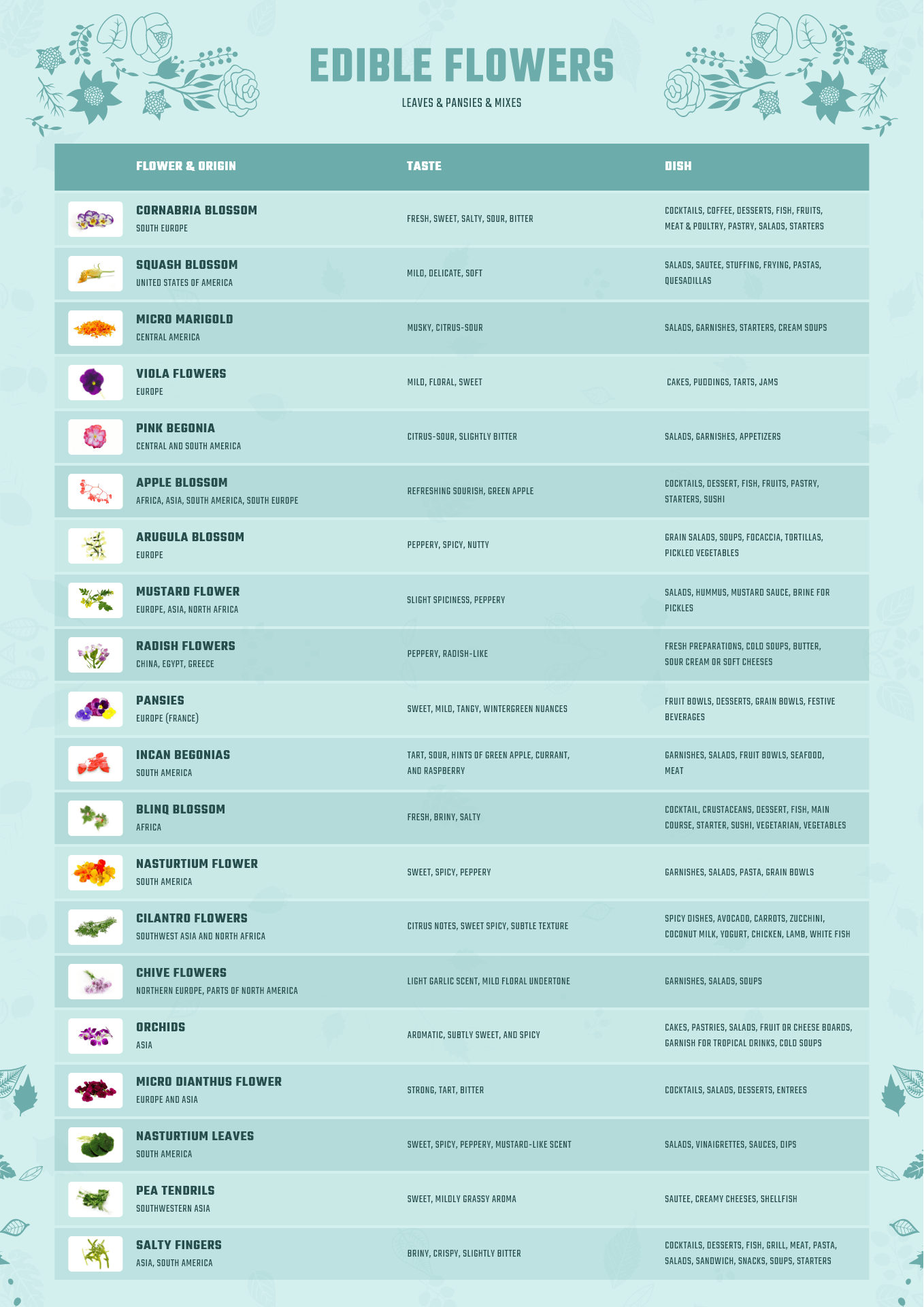The Eden of Edible Flowers: More than Embellishment
If you thought restaurants only add flowers for extravagant plating, you might be in for a surprise or two. Far from being a modern-day gastronomic addition, edible flowers have found extensive use in the old times of Ancient Greeks, Romans, Egyptians, and Chinese. Many such early civilizations have skillfully blended them into their ritual, medicine, and food.
The enduring, centuries-old custom is not without reason. Using these well-picked joyful specks will enrich the color, fragrance, and flavor of a given dish. What is more, you’re also reaping various health benefits!
The Quest for Edible Flowers
Oh, summer, the prime for flowers everywhere! If the thought of abundant seasonal produce delights you, it’s time to get bold and go beyond just eating fruits and veggies. We’re so used to thinking of flowers as a mere decoration that we entirely forget that they are, in fact, part of a plant.
Our quest for food-grade flowers begins! As you might have guessed, you can’t really garnish your summer dishes with petals picked by the side of the road (pollution’s a thing, after all). Your local farmers’ market is the obvious safe option here, but you can also find wholesale suppliers selling them online – a time-efficient alternative. Regardless of the method, make sure your flowers are organic: namely, unsprayed and pesticide-free. And even if you’re confident about that, you should always thoroughly rinse whatever goes into your cooking.
Finally, if you’re lucky enough to have a garden, we strongly encourage you to grow these edible goodies yourself. And while we’re on the subject: you might be missing out on flowers you’re already growing – those of basil, chives, sage, thyme, dill, garlic, squash, and apple. After all, it’s a waste to only harvest the fruit of a plant when its flowers are equally valuable.
Widespread Varieties
A faint, herbaceous flavor to your dishes can be thrilling, but edible flowers offer much more than a finishing flair. Without further ado, here are 19 edible flower varieties and some quick tips on how to cook them.
-
- Apple: apple blossoms are citrus-sour, tart, and highly aromatic – a terrific option for sweets and cocktails. They’re said to contribute to a clear complexion, improved digestion, and even stress relief.
- Bergamot: use wild bergamot flowers for a heady minty flavor with some hints of citrus. Little known fact, bergamot oil is what gives Earl Grey tea its signature taste.
- Carnations: loved for their highly scented, gorgeous swirls, carnations are also edible when grown organically. Fragrant and somewhat peppery, their petals make for tasty, candied treats. But you can also chop and mix them raw into a soft spread with other herbs of your choice.
- Calendula (pot marigolds): with a tangy taste, ranging from peppery to bitter, Calendula petals can make for the perfect touch to your leafy salads. Keep in mind that Calendula tea is known for its anti-inflammatory, antifungal, and antimicrobial properties.
- Chamomile: loved for its mellow, sweet, and herbal aroma, Chamomile can add a gentle, soothing pinch to your salads, jams, desserts, or beverages.
- Chives: you might enjoy the subtle garlicky flavor of their vivid, purple blossoms – they give off just a hint of the plant’s spiciness, so you won’t risk overwhelming other ingredients in your dish.
- Dandelion: despite their unfavorable reputation as garden weeds, dandelions are thought to have powerful antioxidant properties. They’re quite sweet and crusty too, and you can use them for a fragrant wine, jam, or syrup.
- Dill: a sprinkling of dill blossom may add a pleasant, honeyed finish to a soup or stew, and you can use them as a base for pickle jars.
- Elderflower: it makes for some delicious cordial, syrup, or jelly. Elderflower fritters are another distinctive dish you should consider trying at home.
- Hibiscus: the most popular Hibiscus variety is called Roselle, and it has a tart, fairly sour flavor.
According to Healthline, it may help reduce blood pressure and cholesterol levels.
- Lavender: it’s minty, deeply floral flavor has made lavender into a popular and versatile ingredient: you’ll find it in anything from stews and sauces to ice cream, jam, and cheesecake.
- Lilac: you can use the sweet and somewhat citrous lilac blossom in syrup, cookies, cake, and rice pudding.
- Mint: much like the leaves themselves, mint flowers hold a pleasantly refreshing tang that blends nicely in custards and desserts.
- Nasturtium: the blossom is softer and sweeter than the leaves, adding a slight exotic kick to your dishes.
- Pansies: with flavors ranging from sweet to tart, pansy petals have a faintly grassy taste. They blend extremely well in salad mixes and can enhance exquisite desserts
- Rose: the delicate texture, gentle scent, and distinctively sweet, floral aroma of rose petals have made them the perfect garnish for deserts. There’s unbelievable variety when it comes to rose-infused beverages and dishes: vinegar, tea, syrup, lemonade, liqueur, jam, cookies, halwa, cake, cupcakes, ice cream…The sovereign flower lives up to its fame.
- Squash: petals have a mild taste reminiscent of that of the squash itself. Rome’s markets sell plenty of the yellow buds, known as fiori di zucca. Roman zucchini blossoms are a surprisingly popular thing: they’re stuffed with fresh mozzarella and fried to create a stunning appetizer.
- Sunflower: it’s not just the seeds that we must appreciate! You can grill, steam, or sauté unopened buds in olive oil or butter, topped off with simple seasoning.
- Viola: gentle, buttery, and vaguely minty, viola petals can be sprinkled on top of salads, mocktails, and desserts.
Harvesting & Storing Edible Flowers
For the best results, you should always harvest edible flowers during the cooler times of the day, when water retention is highest. This way, the petals stay perky, fragrant, and fresh. They’re best within a day of harves but, if you need to store them longer than that, leave them on top of a moist paper towel inside a small container and place them in the fridge. This can increase their shelf life to 7-10 days.
Digging for Recipes
During Victorian times, cooking with edible flowers alluded to elegance and refinement. Candied varieties were particularly popular, and you’d also find plenty of flower-encrusted pastries and desserts.
Edible chrysanthemum is so widely used in Japanese cooking that there’s a separate word for it: shokuyogiku, literally “chrysanthemum used in food”. Sugary and less bitter than its ornamental counterpart, its exquisite petals go into anything from miso soup to tempura (deep-fried dishes). Some food companies even process them into fully dried sheets.
Each culture and each historical period assigned different worth to these frequently overlooked marvels of nature. Nowadays, minimal research (we mean just a bit of Googling) can uncover plenty of mouth-watering ideas on how to use edible flowers: garnish your beverages and desserts, mince them into spreads or dry them for tea, turn them into fragrant relishes and jams. The garden is the limit; well, at least metaphorically, because they’re also fully available online.
Wrapping Up
We’ve seen that food-grade flowers are far from being a purely aesthetic enhancement, so think twice before moving that fragrant speck off your restaurant plate. For an easy start, you can check out Riviera’s fine edible flower selection.
